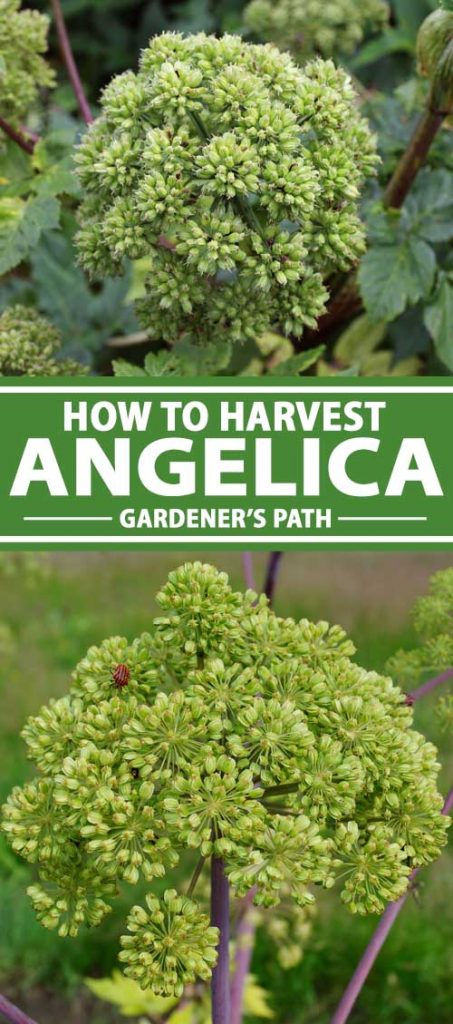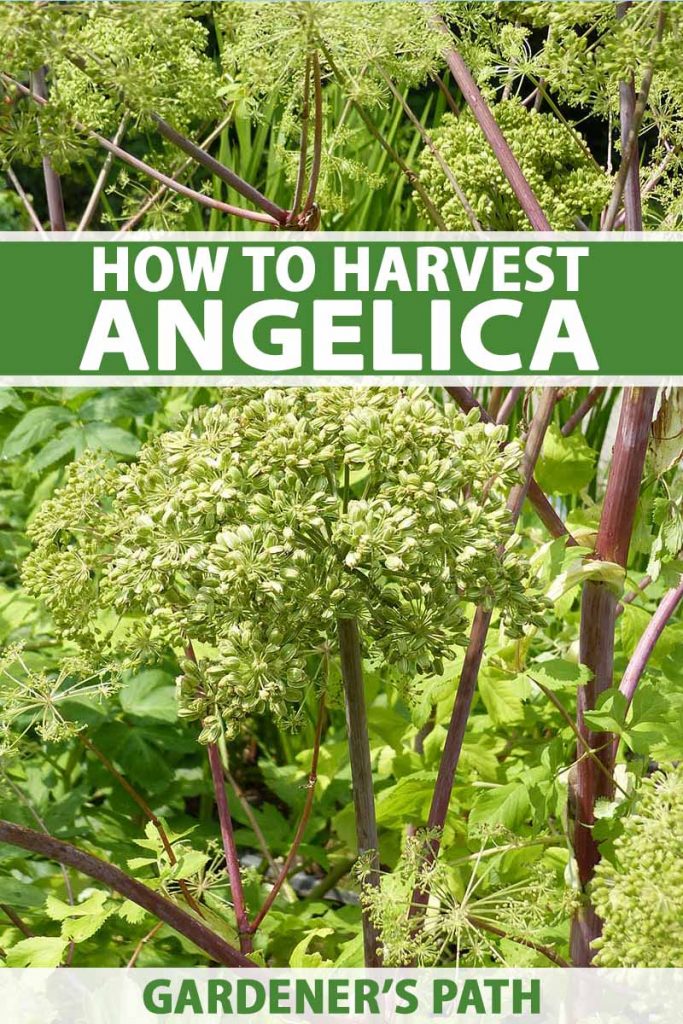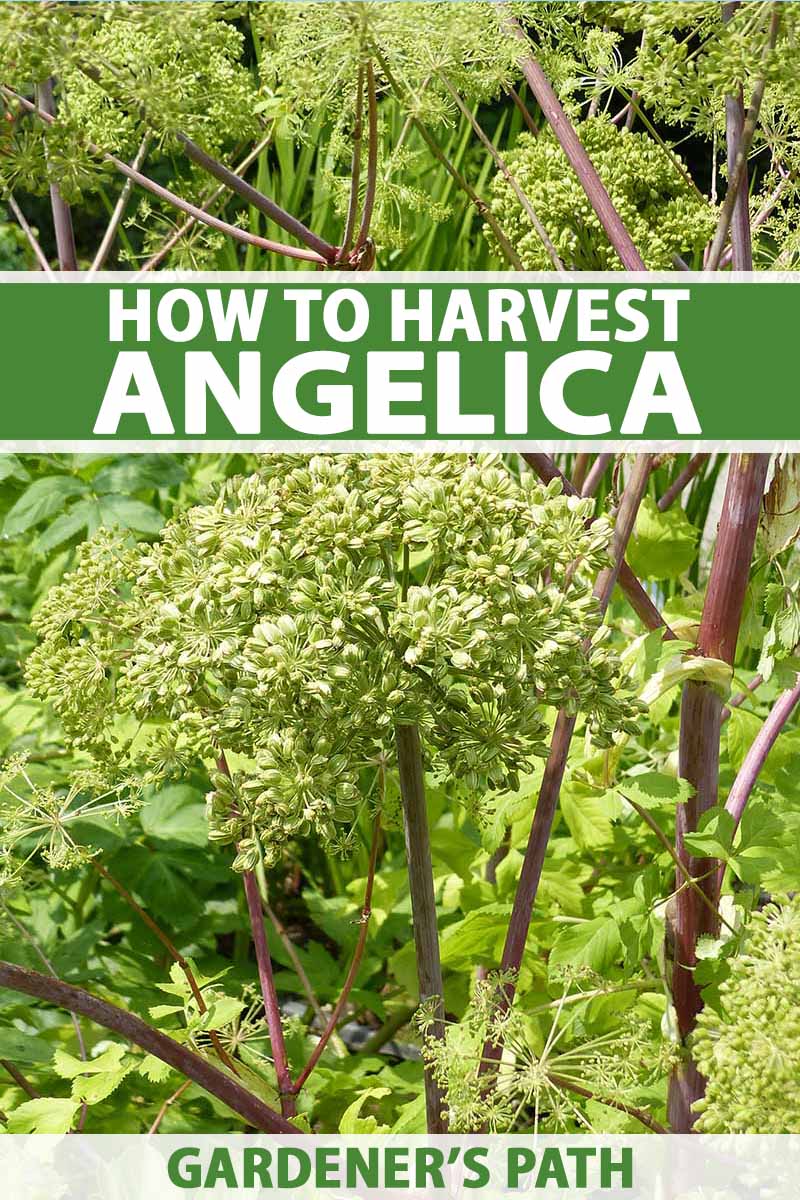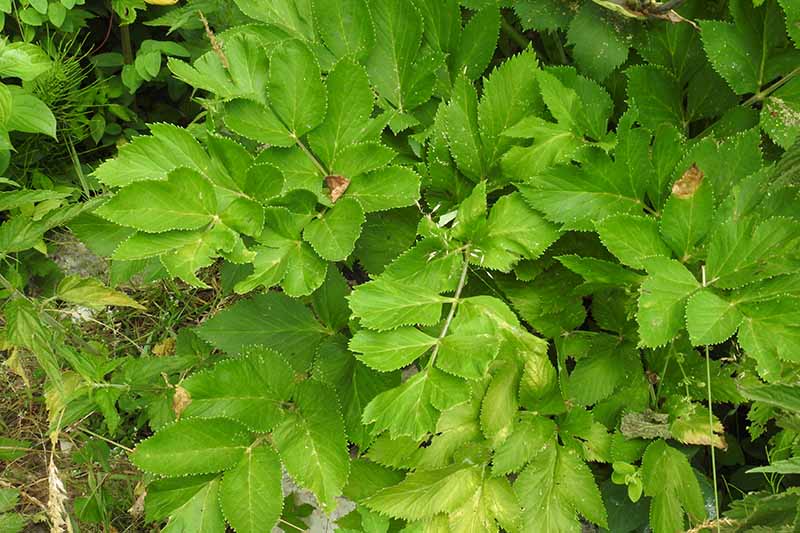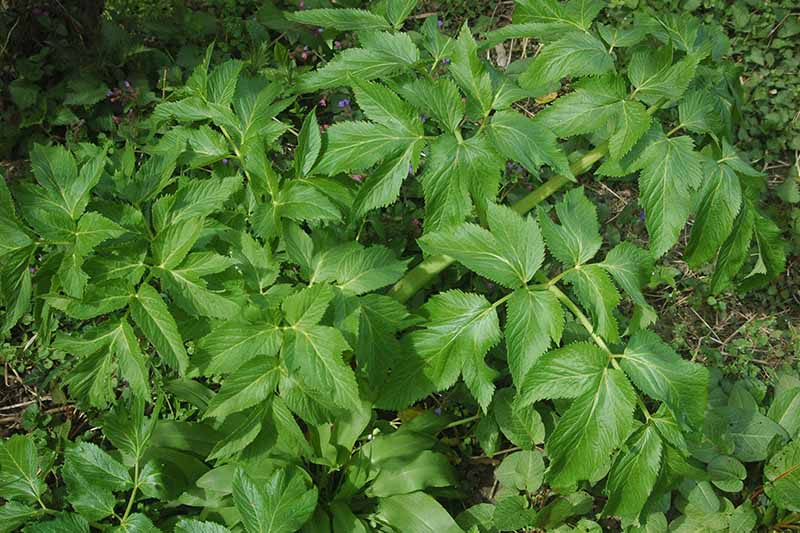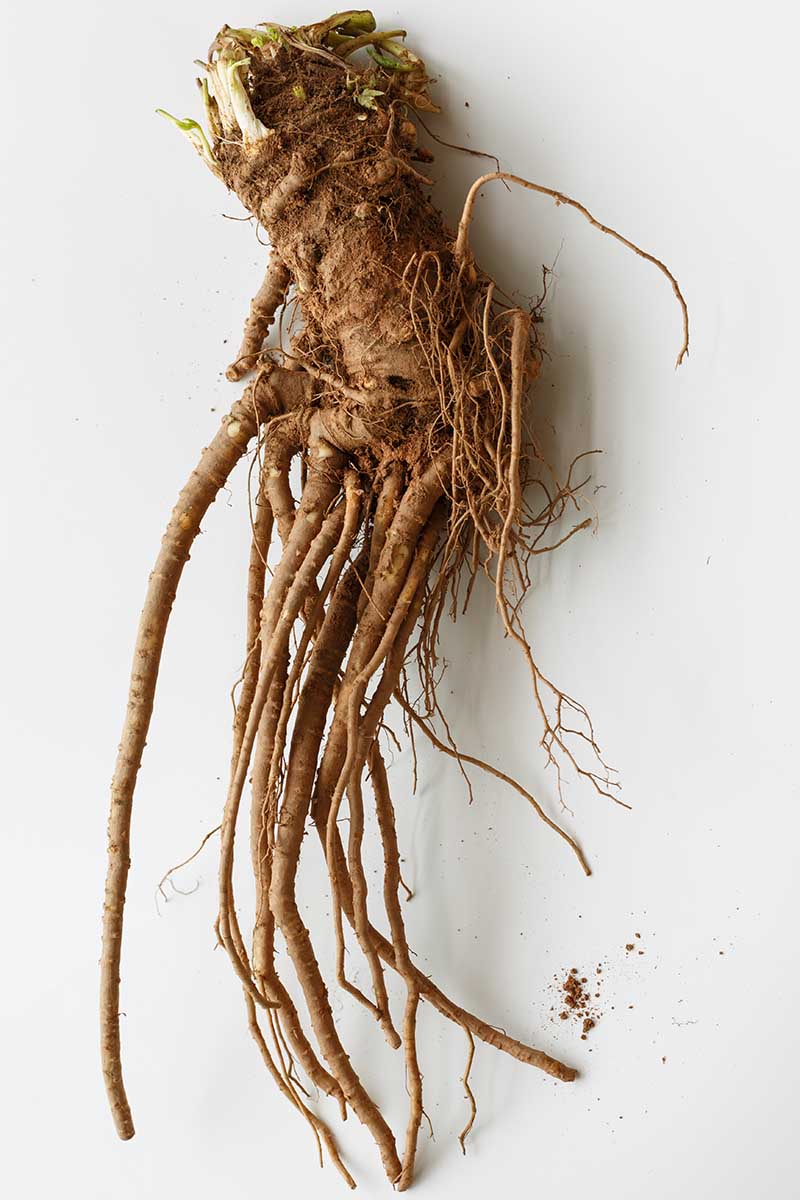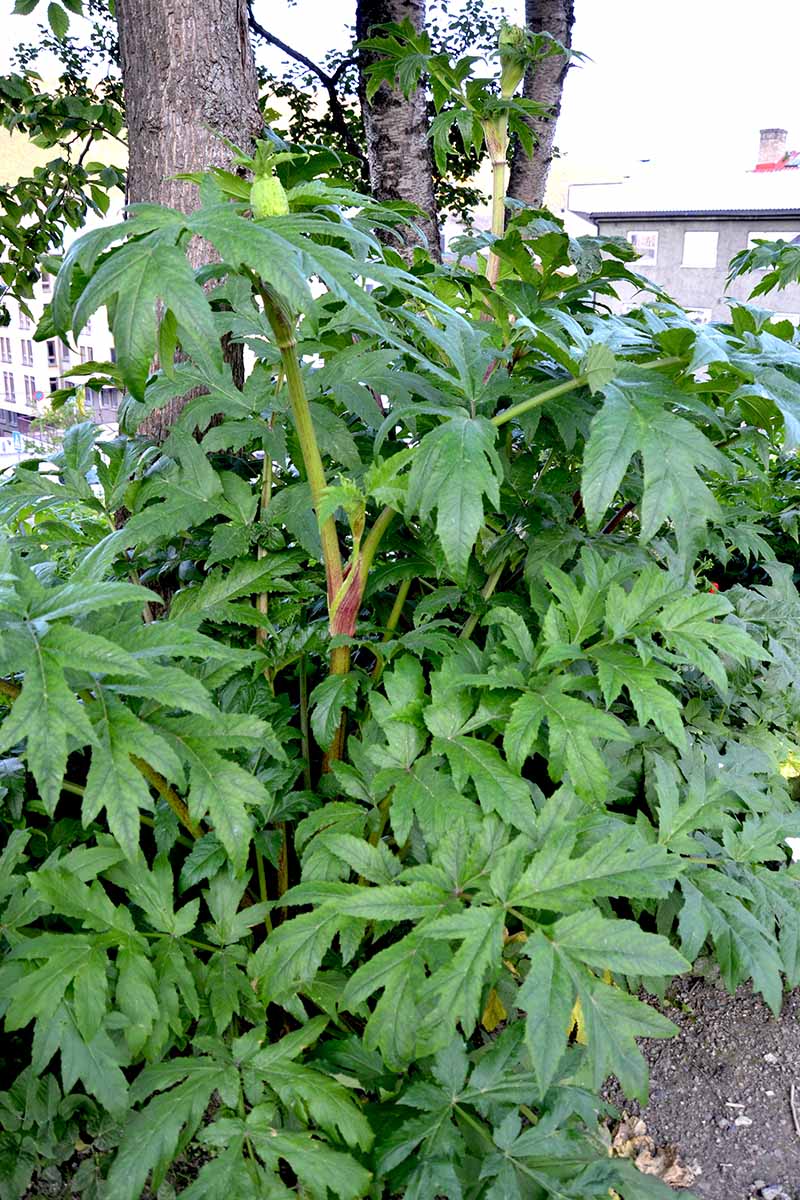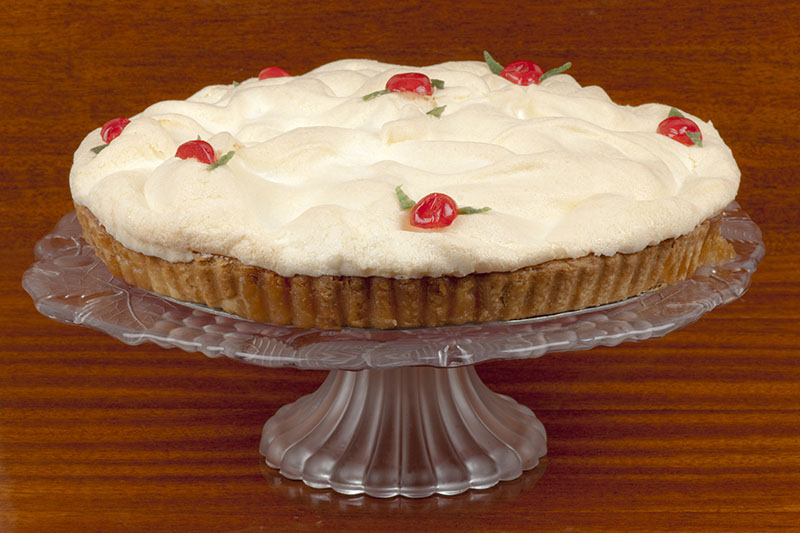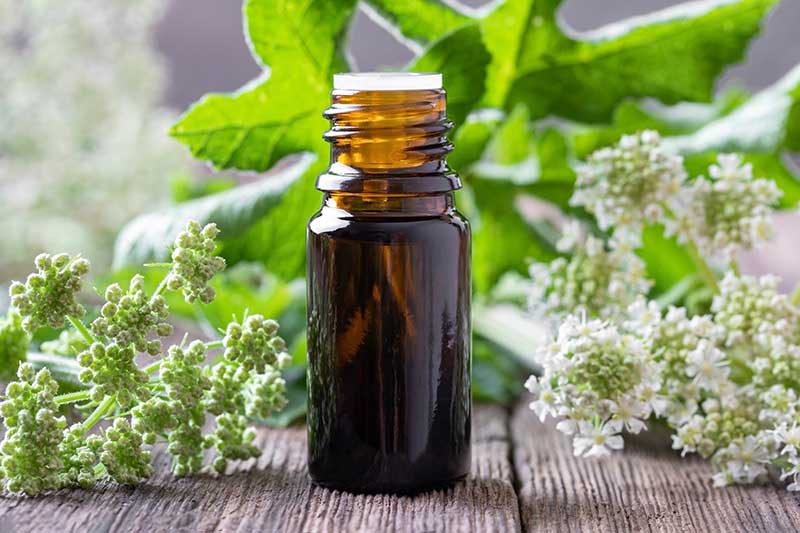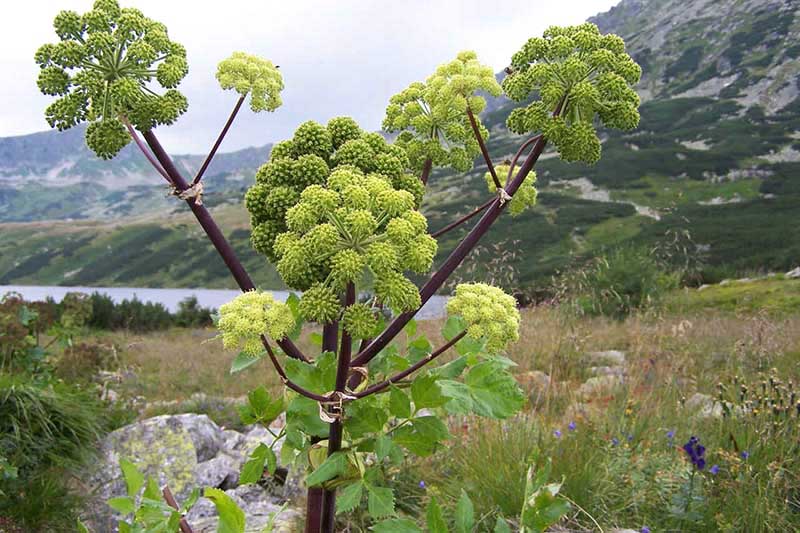Extracts of this plant have been used historically to treat infection, and it was even used in “the King’s Majesty’s Excellent Recipe for the Plague” in the 1600s. Today, it is used by herbalists to treat a variety of ailments, from poor digestion to respiratory distress, UTIs, and inflammation. Angelica has many uses in cooking, flavoring, liqueur production, and perfumery as well. You can even make candy out of it. We link to vendors to help you find relevant products. If you buy from one of our links, we may earn a commission. Here’s what’s ahead in this article:
The Biennial Life Cycle of Angelica
Angelica is considered a biennial. This means it completes its life cycle over two seasons, though occasionally the process may take three or more years in cooler growing zones. During the first year, it stays small, growing only low leaves. In the second season, the stalk shoots up to impressive heights, sometimes growing to be eight feet tall! During this phase, the plant develops large flowering umbels and seed pods. The plant typically dies at the end of the second season, after it has gone to seed.
Because it is a biennial and the growth pattern of the plant differs from one season to the next, different parts of the plant are harvested in alternate years. Tip: If you start seeds for two consecutive years and allow them to reseed naturally at the end of their growth cycle, once they become established, you will always have all parts of the plant available to harvest each year! See our angelica growing guide for more information on how to care for this useful herb.
How to Harvest
All parts of the plant are edible and useful. During the first year of growth, harvest the young leaves. These can be picked at any time, but they are at their best in late spring or early summer. To harvest, just cut off the leaves you need, leaving some intact on each plant. A good general rule to follow when harvesting is to take only 1/3 of the leaves at a time. Pick leaves carefully, taking care not to cause damage to the main stem. Harvest the roots in either the fall of the first season or early spring of the second, before the stalks have a chance to shoot up and produce flowers. The best time to harvest roots is when a plant is directing most of its energy towards root production and growth, rather than creating flowers, fruit, or seeds. Additionally, if you wait too long to harvest the roots, they may become woody and tough. To harvest roots, simply take a garden spade and carefully dig up the plants. If you wish, you can cut the foliage back to about a foot above the soil line prior to harvesting, to make the plant easier to work with. The roots of angelica are soft and fleshy, so they are not challenging to dig out. Remove some plants and leave others to flower and go to seed, harvesting no more than a third of your total crop.
The stems should be cut in the second year, in mid- to late spring, when they are still young and tender. Cut the stalks about two-thirds of the way down, just above foliage. By cutting some of the stems at this time, you are also helping to prune the plants, and they will thank you by continuing to shoot up more stalks and produce more flowers and seeds throughout the season. Always leave some plants to go to flower and seed so you can continue to grow a fresh supply each year. If you want to harvest the seed heads, do so after they dry and turn yellow. The easiest way to collect the seeds is to secure a paper bag around them with a rubber band, and wait for them to fall off the plant and into the bag. Learn more about how to propagate angelica here.
Cooking and Recipe Ideas
The flavor of angelica is one of a kind. It is earthy, slightly sweet, a little bit bitter, and may present a hint of licorice flavor.
Angelica is sometimes described as having a flavor similar to that of juniper berries. The taste is strongest in the roots and stems. Cooking angelica is similar to the way you would prepare asparagus or celery. Fresh stalks and leaves can be eaten raw in fruit salads, or used as a garnish. Stalks can be stewed and made into pie fillings or jams, roasted with meat, or sauteed in butter to be served as a side dish. They pair well with rhubarb, intensifying the tart flavor. In baking, the stems can be used to balance high-acid fruits, to reduce the amount of sugar or sweetener required. Use the leaves to add flavor to poultry, fish, soup, fruit pies, or stews. Add the leaves towards the end of the cooking process to bring out the best flavor. You can also use the leaves to make a compound butter for use in cooking. To do this, soften four tablespoons of butter, and add two tablespoons of chopped leaves. Optionally, you can add a little lemon zest for a touch of citrus flavor. The seeds can be used as a spice, with a flavor similar to fennel or anise. To make a medicinal herbal tea, simmer the fresh or dried root in boiling water for 15-20 minutes, and strain before serving. The roots are also a popular addition to many liqueurs, including chartreuse, gin, and absinthe. To make your own infused alcohol, mix 2 tablespoons of fresh or dried chopped root with 2 ounces of vodka or another clear spirit in a glass jar. Place in a cool, dark location for 2-4 weeks, then strain off the liquid and discard the root. You can add a few drops to your favorite cocktail for a slightly bitter, aromatic flavor.
Impress Your Friends with Angelica Candy
In 17th-century England, the stems were commonly made into a deliciously aromatic candy. To candy angelica stems, start by bringing equal parts water and sugar to a rolling boil. While you are waiting for the water to heat up, prep the herb by cutting freshly harvested stems into 2- to 4-inch pieces. Place the stems in the boiling simple syrup and simmer over gentle heat for 3 to 4 minutes. Remove the angelica and douse it in and ice bath to stop the cooking process, but leave the sugar water simmering on the stove. Peel off the thin skins by hand or with a vegetable peeler. Place the stems in a bowl and pour the sugar syrup over them, then allow them to cool to room temperature before chilling overnight. The next day, drain the syrup back into a pot, and return it to a boil until it has thickened up a bit and registers 225°F on a candy thermometer. Pour the syrup over the stalks again. Cool, and place in the refrigerator overnight. Repeat the process once again the following day. After three rounds of boiling the syrup, submerging the stalks, and refrigerating, remove the stems from the syrup. Blot gently with paper towels to dry them, and toss them with granulated sugar.
You can use this unique confection to decorate cakes and desserts, or enjoy it on its own as an indulgent snack. To dry stems, use a dehydrator on the lowest setting, leaving the door open to increase air circulation. You can also air dry them on a cooling rack. Once they’re dry, store in a tightly sealed container in the refrigerator. Get more tips on drying and storing herbs in this guide.
Other Uses
You’re going to want to take advantage of this plant’s aromatic fragrance. It is often used in perfumes, potpourri, and infused oils.
You can make your own infused oil by adding the fresh or dried root to your carrier oil of choice in a sealed jar.
Versatile and Delicious
This distinct and impressive herb can be used in its entirety. Whether you are interested in making plant-based herbal remedies, sauteeing some greens, or decorating a cake, angelica can do it all! Are you growing angelica in your garden? Do you have a favorite way to use it? Share your ideas in the comments below! And for more information about growing medicinal herbs in your garden, why not check out one of the following guides next:
How to Grow and Care for Motherwort How to Grow and Care for Yarrow A Medicinal and Visual Delight: How to Grow Feverfew
© Ask the Experts, LLC. ALL RIGHTS RESERVED. See our TOS for more details. Uncredited photos: Shutterstock. With additional writing and editing by Clare Groom and Allison Sidhu. The staff at Gardener’s Path are not medical professionals and this article should not be construed as medical advice intended to assess, diagnose, prescribe, or promise cure. Gardener’s Path and Ask the Experts, LLC assume no liability for the use or misuse of the material presented above. Always consult with a medical professional before changing your diet or using plant-based remedies or supplements for health and wellness.
